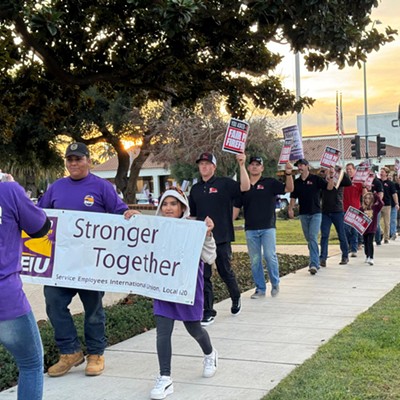Something important is happening in Santa Maria. We are about to elect our city leaders in a new way. Instead of city-wide campaigns, where we seldom get to know all the candidates running for office, beginning in 2018, voters will elect a councilperson from their district, their community, and their neighborhood. This is an exciting change to the political landscape. If we want to help to create fair districts, we need to get involved now. The district lines will be set by May 2, and our city leaders need to hear from us.
Public input will be taken at a community meeting the evening of March 30 at the Veterans Memorial Center in Santa Maria at 5:30 p.m. Future hearings should be held in other neighborhoods.
There is much to do before then. As residents of Santa Maria, we need to look at our communities and determine which community districts will provide us with a real choice when we vote.
California State Election Law gives the most power to neighborhoods and communities. The law is especially clear about “protected classes,” like African Americans, Native Americans, Asian Americans, and Latinos. The law says that when we create districts, we can neither put all of one class in the same district to limit their power citywide or divide a class, such as Latinos, into many districts to dilute their voting power. Dividing our city at Broadway and Main is one way to achieve that goal.
The law requires the city to hold five meetings to work with Santa Maria residents on creating the districts. The first occurred at the City Council meeting on March 7. This meeting allowed the city manager to explain how the districts could be drawn and city residents to suggest what should guide the council in their choice. It was obvious that night that our city leaders and residents need more information on district creation and election law.
Santa Barbara went through this process in 2015. We can learn how they achieved districts by going to this city link: santabarbaraca.gov/gov/vote/district_elections.asp.
One challenge for our current council is the fact that two pairs of council members live in the same potential districts. This means that they will either have to run against each other for one seat or, because elections for council are staggered every two years, a current councilperson may have to leave the council and wait two years to run again. There is no law to protect a sitting councilperson’s seat. The creation of the fairest and most democratic districts may require this to happen.
Our mayor and councilmembers each have one vote and will vote for the final district map once all testimony is heard. It is their job not to protect their seats, but to vote for the districts that benefit the democratic process the most.
This is why we need to educate ourselves on creating districts and speak up at the next four hearings. The city has brought in demographers to help us to understand the city. They can guide us, but individuals, neighborhoods, and community groups can submit district maps to be considered by the council before it makes the final decision.
It has been suggested to the city manager and council that the city should provide an online tool to help draw district maps and a workshop to teach concerned residents the correct way to do that, as Santa Barbara did.
Our goal should be to work together to create districts that:
• Respect the integrity of neighborhoods and their special character.
• Give both candidates and residents the best opportunity to get to know each other.
• Encourage more residents to register to vote and participate.
• Encourage residents to contribute their time and money to community leaders who are competitive against candidates supported by wealthy interests.
• Create a City Council representative of the diversity in our city.
While we are creating these districts, we should also look at the way elections in Santa Maria are funded. Limits on individual contributions would allow new, qualified candidates to run for office. Limiting the amount that political action committees can give to candidates would make elections fairer. Currently, special interest groups are unlimited in what they can give.
Imagine an election where thousands of residents support their candidates with small contributions, and the council elected is responsible to the people and not special interests. Deep pockets do not make great leaders. Great leaders come from and belong to the people.
Opponents of this new city election system have made some unfounded assertions. They claim that new council people will only represent the families in their district and not the whole city. History proves them wrong.
U.S. senators and representatives, as well as state senators and assembly members, do both, and so will our new council.
As Santa Barbara 3rd District Councilwoman Cathy Murillo has said, “Representing my district has been wonderful. Street by street, neighborhood by neighborhood, we have reinvigorated our part of Santa Barbara. Neighborhood associations have been reborn. We now have a stronger sense of community.”
In dividing our city into election districts, we also can build stronger and safer communities. Knowing your council person, and that she or he understands your concerns, builds community naturally. Then, the new council and mayor can work to bring city communities together in all their diversity. It is that diversity that is our strength, and it should be celebrated.
I hope to see you Thursday, March 30, at the Veterans Memorial Center, 313 W. Tunnell St. in Santa Maria, to participate in our democracy. Let’s help create city districts that work for us all.
Gale McNeeley is a resident of Santa Maria. Send your thoughts to [email protected].








